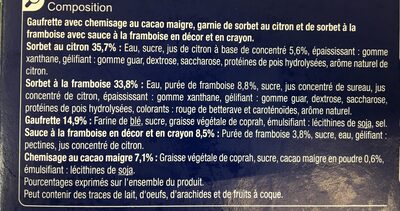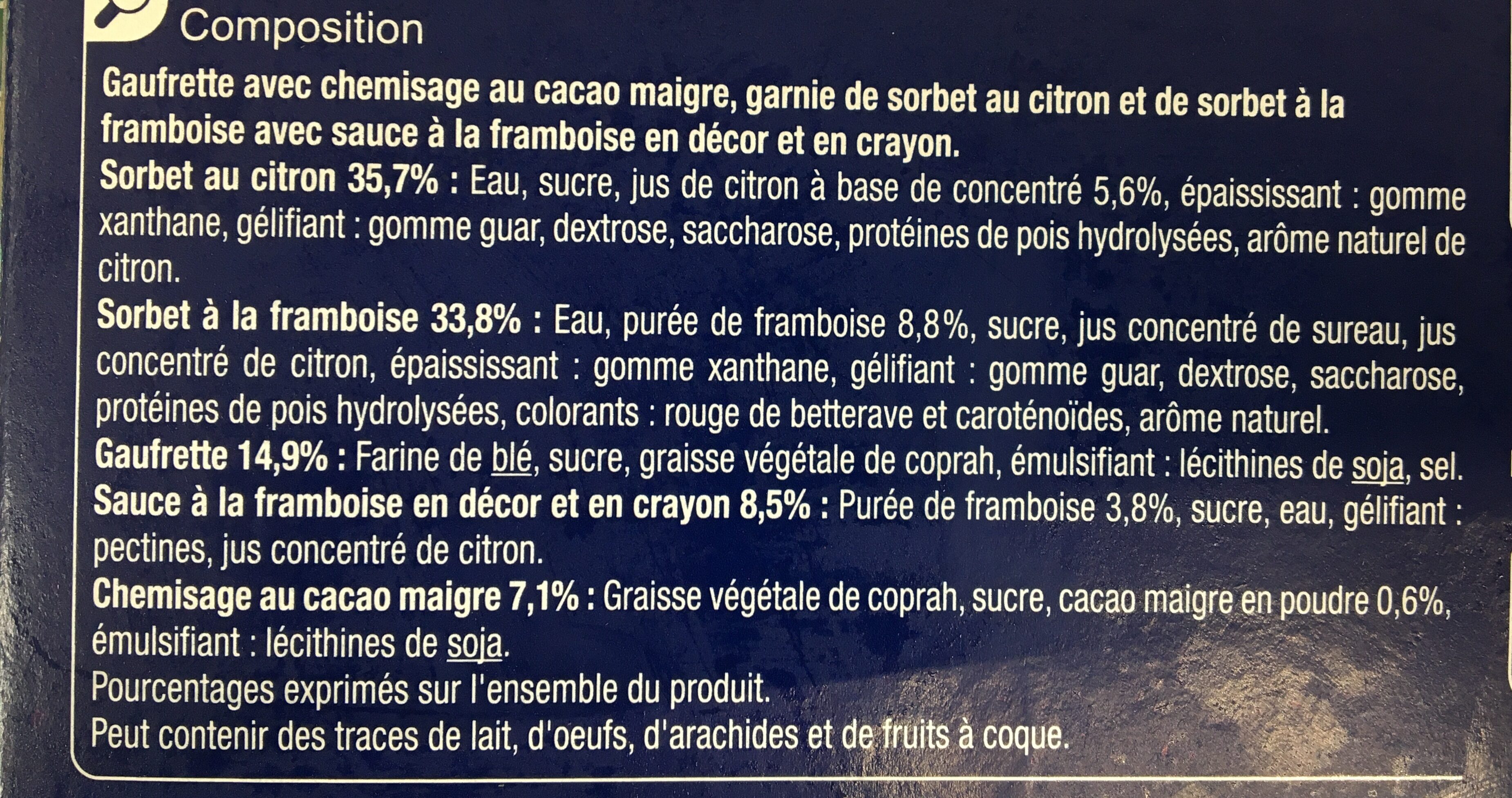Citron framboise - Carrefour - 461,4 g
This product page is not complete. You can help to complete it by editing it and adding more data from the photos we have, or by taking more photos using the app for Android or iPhone/iPad. Thank you!
×
Some of the data for this product has been provided directly by the manufacturer Carrefour.
Barra-kodea: 3560070820856 (EAN / EAN-13)
Izen arrunta: Sorbet au citron 35,7% et sorbet à la framboise, aromatisé 33,8%, gaufrette 14,9%, sauce à la framboise en décor 6,5% et en crayon 2%, chemisage au cacao maigre 7,1%.
Kopurua: 461,4 g
Markak: Carrefour
Kategoriak: en:Desserts, en:Frozen foods, en:Frozen desserts, en:Ice creams and sorbets, Izozki, en:Ice cream cones
Etiketak, ziurtagiriak, sariak:
en:Green Dot, en:Made in France, Nutriscore
Producer: Fabriqué en France par EMB 33539 pour Interdis.
Traceability code: EMB 33539 - Vayres (Gironde, France)
Dendak: Carrefour
Matching with your preferences
Ingurumena
Carbon footprint
Ontziratzea
Transportation
Other information
Other information: Ces 6 cônes ne peuvent être vendus séparément. Picto GDA Laissez-vous envahir par la fraîcheur de ce cône garni d'un sorbet à la framboise et d'un sorbet au citron. Vous apprécierez son cœur de sauce à la framboise. Variez les plaisirs en découvrant les autres parfums de la gamme. Sauce à la framboise+ picto X6
Abisua: ATTENTION, NE PAS RECONGELER APRÈS DÉCONGÉLATION.
Conservation conditions: À consommer de préférence avant la date indiquée sur le côté de l'emballage et à conserver dans un congélateur *** à -18°C.
Customer service: Interdis - TSA 91431 - 91343 MASSY Cedex - France.
Report a problem
Datuen iturria
Product added on by kiliweb
Last edit of product page on by mariacastiel.
Produktuaren orria -gatik editatua autorotate-bot, carrefour, date-limite-app, ecoscore-impact-estimator, musarana, openfoodfacts-contributors, org-carrefour, roboto-app, thaialagata, yuka.VFlvNFBvMExuUFVvbU04NDNrMklvT0JQd0svNVVXV09GZTB0SVE9PQ.









